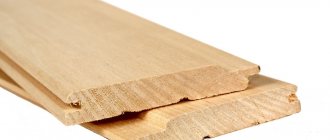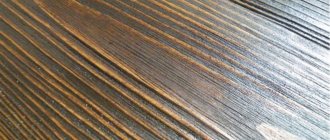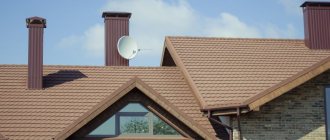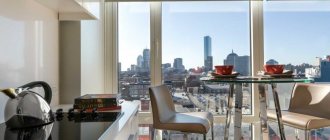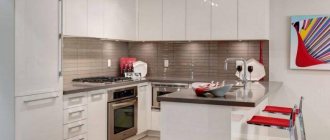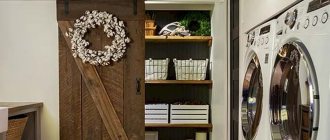Antique items invariably evoke admiration for their beauty and the skill of their creators. Rare items that have retained their attractiveness become an unattainable dream due to their high cost. Fans of antiques have found an affordable way to decorate their home and make an antique door with their own hands. There are several methods to decorate your interior in retro style or change your front door beyond recognition. All work is done independently; you don’t need to be an artist or cabinetmaker to do this.
Aging techniques
An old door can be made presentable.
The front door influences the first impression of the house, therefore, in addition to the reliability and strength of the locks, the owners are concerned about its appearance. Solid wood canvas, even after many years, retains its excellent qualities and natural living beauty. Scuffs and scratches, constant companions of time, make the door less presentable, but there are ways to correct the situation and give a quality item a second life. There are five main techniques by which the door travels into the past:
- applying stain;
- brushing with a wire brush;
- use of paint and paraffin;
- patination;
- craquelure varnish.
Even this one can be restored.
When choosing a way to make a door look like an antique, focus on the external features of the door, and in the case of interior doors, on the decor of the room.
With metal overlays
Imitation of antiquity is appropriate on swing doors; sliding or folding structures with such an effect look unnatural. Metal overlays attached to the corners and lock, as well as an unusual forged handle in the shape of a ring or an animal’s head will be an excellent addition to the decor. The style will be supported by massive canopies secured with nails with large brass heads.
Wood aging options
There are a couple of options for doing this job. The material of manufacture also greatly depends. Since the fiber in wood is different.
If you have antique doors made of solid pine, then virtually any option will do. If you want to age oak, then it will be more difficult to do this; it is a fairly dense material in its structure. There are a couple of ways in which this work can be done.
Wood staining
This method is most often used. It is quite simple and the price of the material is not expensive.
Attention: Along with this option, the most important thing is to apply the liquid evenly to the surface. If it is not uniform, it will be very noticeable. This is especially noticeable if doors and furniture are made to look antique.
Now let's look at how to make antique doors and how to paint them:
- The first thing we do is prepare a stain solution , but it should be used on a water base. Then the distribution of the coating will be much more uniform;
- Now we take a sponge, it should be soft and absorb moisture well . We remove the layer that was previously applied to the wooden door. Just not completely, we savor the stain in the middle of the elements. Edges and corners should be left in their previous form;
Attention: The stain must be applied everywhere. Do it properly. If there are cracks or are difficult to access, then use a brush.
- Now the doors made of antique wood need to be completely dried . Now the stain will smooth out and fit correctly;
- After complete drying, we apply another layer of stain, this will be the final one. Only for this purpose should you dilute the stain with any solvent. Then it will be well distributed on the plane and dry quickly;
- Let the surface dry completely and now you need to fill the pores with alkaline soil. This should be done with a brush, or if the plane is huge and even, then it is possible to use a sponge;
- After complete drying, rub antique wax over the entire surface ; it is worth buying it in advance. It will give the surface gloss and shine. It will also help preserve and protect the wooden surface.
Preparing the door leaf
First remove the old paint
Before starting any artistic work, the door must be prepared. To do this, it is removed from its hinges and laid horizontally on two stools. The canvas is freed from loops, handles and locks. The glass inserts are removed from the canvas along with the glazing beads. The next step is to remove the old paint. To do this, use a hair dryer, it heats up the coating, the paint swells and comes off. Finally, it is cleaned off with a spatula. Small particles of paint are removed by sanding.
Chips and irregularities are puttied
If there are chips on the surface, they are rubbed down with putty to match the canvas. The door must be cleaned of dirt and grease.
Preparatory work
Before starting work, you should remove the doors from their hinges and place them horizontally on a hard surface. Two stools are suitable for this purpose. Then, using a hair dryer, you need to remove the old paint. How to do this? By heating paint, which will swell under the influence of temperature. Now it can be easily removed with a spatula.
The next step is to seal all the gaps, cracks and potholes formed during operation. To do this, you will need putty, the color of which should be close to the shade of the wood.
Ideally, use a furniture varnish based on beeswax. It is not cheap, however, if you want to make your entrance doors beautiful, reflecting the color and texture of natural wood in its full glory, then you should not skimp on finishing materials.
The final stage is sanding. In order for the paint to lie smoothly in the future, you need to polish it thoroughly. Doing this by hand is difficult and time-consuming, so a grinding machine will help. Now you need to decide how to decorate the door.
Brushing
Brushed door covered with stain
Having prepared the wooden doors, we begin artificial aging of the canvas. Not all tree species are subjected to brushing; it is not used for beech, maple, cherry and exotic trees. Among those that are transformed after processing are pine, larch, walnut and oak. Before starting the process, the surface is cleaned of dirt and grease. This method involves using a wire brush to remove the soft layers of wood. To avoid damaging the natural pattern, brush along the fibers. It is moved with the same speed and pressure so that the processing is uniform.
The finished surface acquires reliefs similar to natural changes in wood. After removing the fibers and sanding, the door is varnished. To enhance the effect, you can apply stain. This method allows you to create the most believable imitation of a rare item.
Benefits of processing
Wood processed using brushing technology has a number of advantages.
Among the main ones are the following:
- Strength. All soft fibers are removed. As a result, only hard ones experience physical stress. Thanks to this, a product made from brushed material is stronger and lasts longer.
- Protection. By changing the structure of the top layer of wood fibers, the material is better saturated with protective compounds against bacteria, fungi and pests - they penetrate much deeper. Thanks to this, the wood is less susceptible to the effects of these adverse factors.
- Appearance. Brushed wood has a very interesting texture. Thanks to it, the material has an unusual, attractive appearance that can decorate any interior.
Patination
Patination with white paint
Patination will help create the effect of repeated painting on a pine door. This method requires precision and creativity. The first coat of paint is applied using a spray bottle. It is necessary that the coating is smooth and without streaks. This quality is difficult to achieve using a brush, but you can try. For the main tone, dark paint is used. After it dries, a thin layer of white paint is applied to the door. After letting it dry slightly, wipe down individual areas with a dry rag. The processing is completed with sandpaper, it helps to draw structural dark stripes. The more wear on the canvas, the older it appears. The work is secured with a layer of varnish.
Patination with gold paint
Interior doors with patina are popular, but due to the manual decorating processes used, they are expensive. A little time and imagination will allow you to make such a door yourself with minimal financial costs. In addition to light paint, gold, silver or black are used, depending on this, different patina effects are created.
The secret to the popularity of brushing
The name of the technology is of English origin and means “brushing”. Brushing wood with your own hands is something that not only experienced craftsmen can do: with the right approach, anyone can master the craft of brushing.
Aged wood has not gone out of fashion for many years. Thanks to artificial aging, you can change the appearance and color of a particular type of wood, bringing a new personality to the room. Using brushing, they create a rustic, classic, vintage interior.
Artificially aged wood looks noble, a house with “antique” window frames and doors and patinated wall panels seems to have its own history. Today, aged wood is widely used not only in country houses, but also in city apartments.
Applying stain
Covered with stain
To create an original color and emphasized wood pattern, water-based stain is used. This composition penetrates the pores of the wood and reacts with tannins. Penetrating deep into the canvas, the stain lifts the wood fibers and makes its structure more prominent. The colors of the stain allow it to be applied to various types of wood, it will highlight light shades, reddish and black. Apply the composition with a foam sponge or brush. The work is carried out in several stages, the first layer being the most abundant. After it dries, you can sand the surface and paint it again. The finished door is waxed.
Provence, shabby chic and vintage in design
Many popular modern design styles are characterized by the use of worn and shabby objects and details in the interior, pastel tones and romantic decorative elements.
Did you know? Every year, for their needs, people cut down about 15 billion trees of the entire green fund of the planet, while replenishing it with only 5 billion new seedlings.
Provence
This style was first discussed in the 19th century by the French living in the province of the same name. Their traditions, intertwined with everyday peasant chores and southern nature, became the basis for the development of a new direction in design.
Provencal houses were distinguished by their elegance and simultaneous simplicity, with a reverent attitude towards the things of their ancestors. It was these family heirlooms that became the personification of the spirit of southern France.
This style is characterized by:
- predominance of white and all shades of beige;
- fragments artificially faded in the sun;
- multi-colored palette in decor, accessories (flower patterns, stripes, pastoral and checkered patterns are often found);
- many elements made of wood in decoration;
- artificially worn ceramic tiles (chips, untreated stone, brick, ethnic);
- porcelain dishes, forged mirror frames, textile napkins and tablecloths;
- lighting items with elements of forging, cotton and linen;
- lathed panoramic windows;
- rustic furniture of classic shapes with elements of wood, forging and wickerwork.
Did you know? The tallest tree in the world is considered to be the sequoia from California. Its trunk has grown to a height of 115 meters, and its diameter reaches 8 m.
Shabby chic
It represents a completely new direction in interior design. It originated in Great Britain about 30 years ago.
Its basis is the characteristic British restraint, conservatism, frugality and passion for everything that is old but of good quality.
The shabby chic style is manifested in the following characteristics:
- lack of white tones;
- the prevalence of pale shades: blue, pink, lavender, yellow and milky;
- bright contrasting colors;
- using ceramic tiles to look like weathered painted wood, wild stone or plaster, as well as with small floral patterns;
- on the white plastered ceiling there is classical stucco molding in the tone of gold leaf, as well as bleached fragments of the ceiling;
- wood and metal textures that imitate aging;
- The interior items used are mainly restored antiques, textiles, artificially aged photo frames, antique candelabra, fresh flowers, porcelain dolls and figurines of angels;
- the lighting contains crystal, forging, fabric lampshades and ancient pendants;
- restored furniture made of expensive wood, painted forged metal parts.
Did you know? In the United States of America, all crafts made before 1830 are classified as antiques, in Canada - before 1847, and in the UK - before 1917.
Vintage
It was invented by the French, laying the fundamental foundations from the uniqueness and emphasized originality of ancient worn-out interior items.
Initially, this was the name for wine aged for many years, but over time a whole design style was formed.
Its main feature is the use of antique items, which must accurately correspond to the fashion trends of their era.
Vintage interiors are characterized by:
- prevailing white, beige and milky shades, as well as contrasting shades - burgundy, green, graphite, purple;
- drawings with flowers and vegetation;
- artificially made flaws;
- flooring made of wood, marble or ceramics, but always with a worn effect;
- not overloaded in decor (only valuable antique objects, photographs, mirrors, paintings, candelabra are used in doses);
- stucco molding in a classic style;
- use of natural materials, forged elements, crystal, linen, wool;
- the spirit of restraint and elegance present in the interior design;
- antique furniture made of wood and wrought metal.
Important! For artificial aging, lumber from the following wood species is recommended: pine, spruce, oak, ash, larch, walnut, wenge, doussia, metobo, kempas, merbau. The board may have knots and other flaws - this is even better.
Craquelure
The technique of aging a surface by creating a pattern in the form of cracks is called craquelure. This type of work requires a special varnish. The effect of an antique surface is created on a light background or using contrasting paint. For aging, craquelure varnish is applied to the grease-free door leaf, and the top is coated with a bitumen-based composition. This enhances the relief of the cracks. Acrylic paint is applied to a dark base over varnish. If the general style of the interior allows, cracks in the door leaf are painted over with gold paint. To make the process easier, buy the composition in cans; it applies easily and neatly to the surface. The choice of colors for the base coat and finishing craquelure is very wide.
Original design techniques used when choosing the color scheme of door leaves
In some cases, it is not possible to achieve a single solution that would fit every detail of the interior, which pushes designers to make original decisions and techniques when choosing the color scheme of the door leaf:
- The use of different colors or different textured veneers on each side of the door leaf. Thus, the outer part of the door, facing the hall, will be decorated in the same style as the interior of the non-residential area, and on the side of the room - in a different, contrasting design.
- The designer does not at all have to select framing structures - platbands, in the same color scheme as the door leaf - he can always use a more original solution and work in contrast.
Thus, in such cases, it does not matter at all what shade the trim is used, if the products do not match the shade of the fabric, they can be purchased and installed in the same color as the baseboards, flooring or furniture in each room.
Contrasting trims
- The same techniques can be used when purchasing and installing extensions and door frames. In such situations, the owner of a residential premises can order door frames in the same style and color scheme, and the compatibility conditions will be met through peripheral elements.
- Another interesting and at the same time inexpensive solution that adds uniqueness to each element of the enclosing structure is the use of painting or colored stickers. On sale you can find special stickers for the surface of furniture or door leaves that will diversify and decorate the interior, and also ensure optimal compatibility of all the details of the space being used.
Canvas with painting
A professional will always be able to offer the optimal solution for choosing the right canvas, box and framing elements for each room. This means that the owner of the premises should not get hung up on a single style for each room in his apartment.
Creating abrasion
Scuffs
The noble appearance and spirit of antiquity will give the door leaf abrasion. The process of applying them involves several stages. Initially the door is painted dark brown. After drying, individual areas are rubbed with paraffin or wax. There is no specific pattern here, you create it yourself. The next layer of paint is applied several shades lighter. The paraffin is carefully cleaned off with a spatula; the parts treated with it are not painted over and look darker than the rest of the surface. The dried door is carefully sanded. The original effect is secured with stain, which will protect the wood and emphasize its structure.
Briefly about the main thing
Before purchasing door leaves and other structural elements to fill the opening, you need to decide on the shade of the product. To achieve the optimal result, you should order a design project, especially if the apartment is planned for non-standard finishing with individual design solutions. The best option would be to select a door leaf for the floor covering or baseboard. At the same time, many experts often recommend choosing a color scheme that matches the furniture, walls, or general style of the space being used.
other methods
Paneled door decorated with carvings
Solid wood of beech, oak, ash and poplar is aged by chemical treatment. The door is thoroughly cleaned with fine-grained sandpaper and ammonia is applied to the entire surface. It reacts with tannins, causing darkening and brightening of the wood structure. For coniferous species, this method is unacceptable, since such wood does not contain tannins.
You can achieve a dark color and a relief structure of the fibers by singeing the door - the canvas is burned with an open fire of a blowtorch. After heat treatment, the surface is polished. The final touch is varnish or stain. Creating a rare door is an interesting and creative process; it gives you a chance to show your artistic taste and individuality. All methods of influencing wood are available at home and do not require expensive compounds and tools.
Why is it necessary?
Why is brushing necessary? It's simple. Structured wood is one of the most popular materials used for cladding rooms for any purpose. Thanks to such cladding, the interior acquires original charm and uniqueness. However, wood in its original form is not suitable for implementing the ideas of classic and vintage decor, as well as Provence.
The use of aged wood would be appropriate here; it can be used to make chests of drawers, tables, stylish doors and window frames, as well as for facing fireplaces and making decorative items. In former times, to obtain the necessary texture, logs were buried in the ground for many years. During this time, under the influence of moisture and microorganisms, the soft fibers of the upper layers rotted a little, after which the workpieces were cleaned and sanded.
As a result, a relief texture of annual rings appeared on the surface. However, original patterns on the surface of wood under natural conditions are formed very slowly, and the aging process of the material is delayed for many years. In addition, under the influence of precipitation, wind, ultraviolet radiation and temperature fluctuations, the material becomes less dense and durable, it is easily subject to rotting, deformation and destruction.
The use of aged wood on the facade
The most common use for distressed wood is outdoor decor. Old wood looks great on facades both as a base and as a decorative component.
This material is ideal in cases where there is a desire to create a rustic style, make a reference to some ancient historical era, or add a folk flavor.
The main wood products that will look great in an aged format are steps and railings of stairs, fences and railings, porches and gazebos, supports for awnings, etc.
A few tests are enough to learn how to easily age any wooden object, regardless of shape and size. Moreover, after mastering the basics, you can move on to a controlled degree of aging - some items may need to be made “older” than others. In addition, the same surface can be treated differently over time.
It is the aged wood that forms the basis of the German half-timbered style. In this case, wooden finishing takes place not only outside, but also inside the room. In this way, it is possible to create a single ensemble between the interior and exterior of the building.
As for the expenditure of effort on aging wood for facades, here you need to immediately prepare for the fact that you cannot do without additional devices. Of course, you can try to manually process large beams for a gazebo or cladding a country house, but this will take a disproportionate amount of time. In this sense, it is much more rational and expedient to think about purchasing specialized machines and automatic devices.
Burning
Processing wood using a combined method (firing + brushing) allows you to obtain unusual decorative effects. To do this, they first go over the workpiece with a gas torch or blowtorch. By adjusting the flame supply and the number of passes, you can get different shades from light yellow to completely black.
After firing, brushing is performed. The annual rings will remain dark from firing, and light veins will appear in place of the removed soft fibers.
The method of firing with hot (200 ºС) sand is also used. To do this, wooden blanks are placed in the latter until they darken, after which they are brushed.
Final finishing
Aging of countertops, doors, panels, etc. ends with coloring. Several stages give a good result. First of all, you need to carefully remove sanding dust from the surface. The best way is a powerful air jet. Single products can be blown out with a vacuum cleaner, but in mass production you cannot do without a compressor.
It will also be needed for coating. There are several of them.
- Primer.
- Coloring. The classic brushing color is gray with all shades. There are 48 of them on the RAL scale: from squirrel gray to pearlescent mouse gray. This is what wood has that has spent ten years under the sun, precipitation and winds.
- Patination followed by polishing.
- Cleaning from dust, varnishing.
Wood oils are also used, which are capable of forming films due to their high content of linolenic acid. Wood oil is the marketing name for drying oil (boiled oil). The best of them is flaxseed: up to 80% acid (sunflower – 30%).
Working with oils requires skill: they must be rubbed in so that there are no mini puddles or streams left. Once dry, they cannot be removed.
